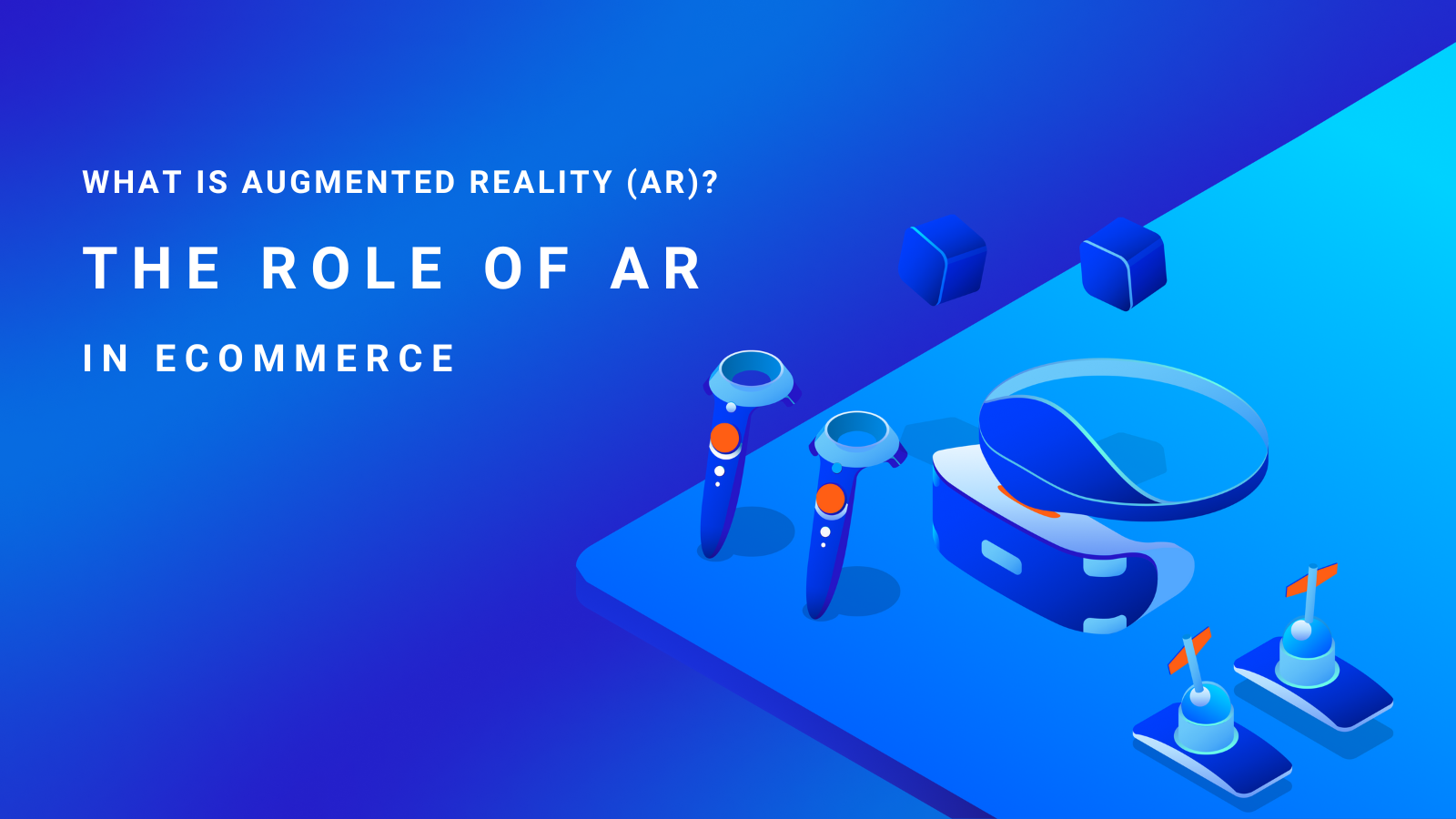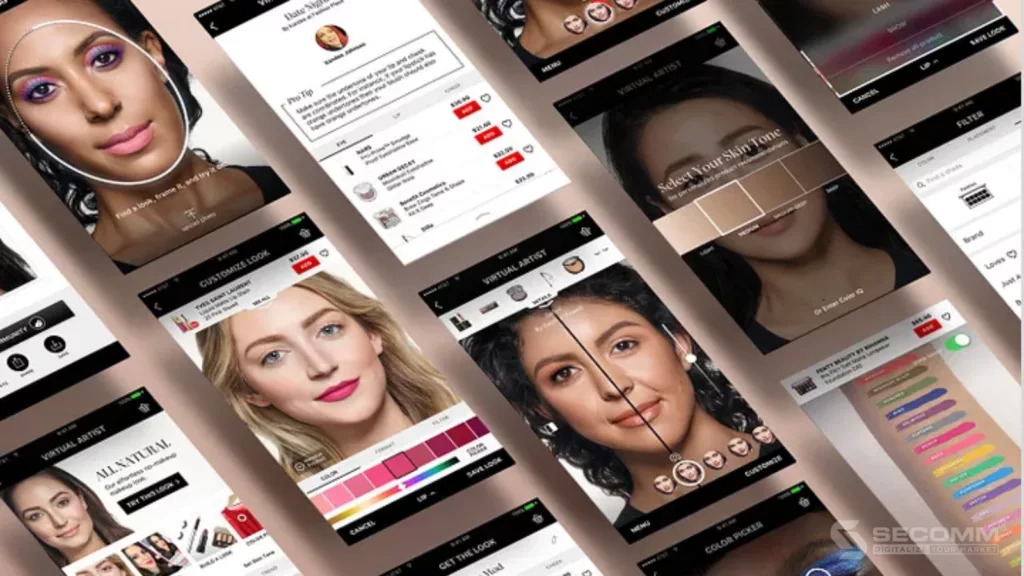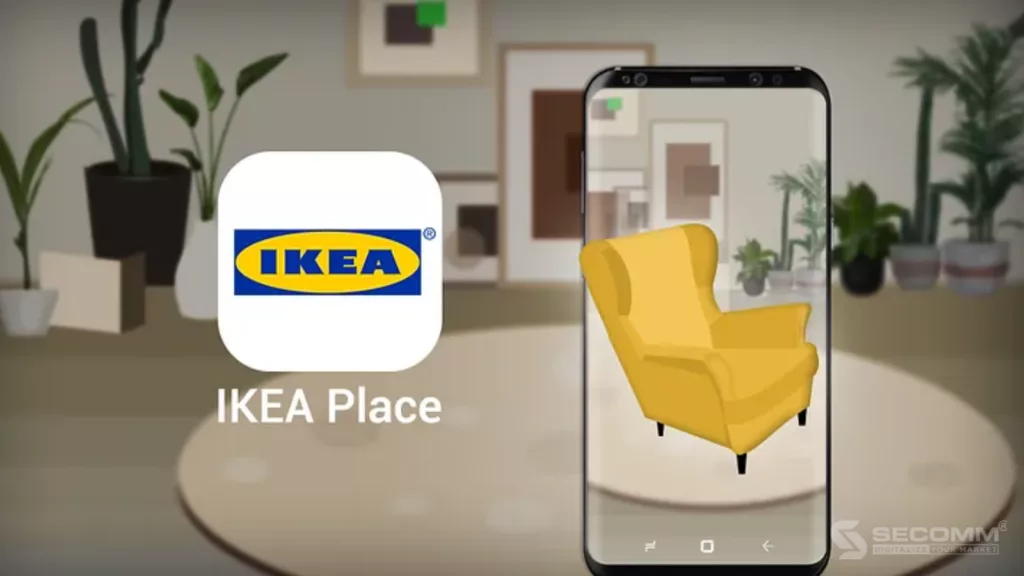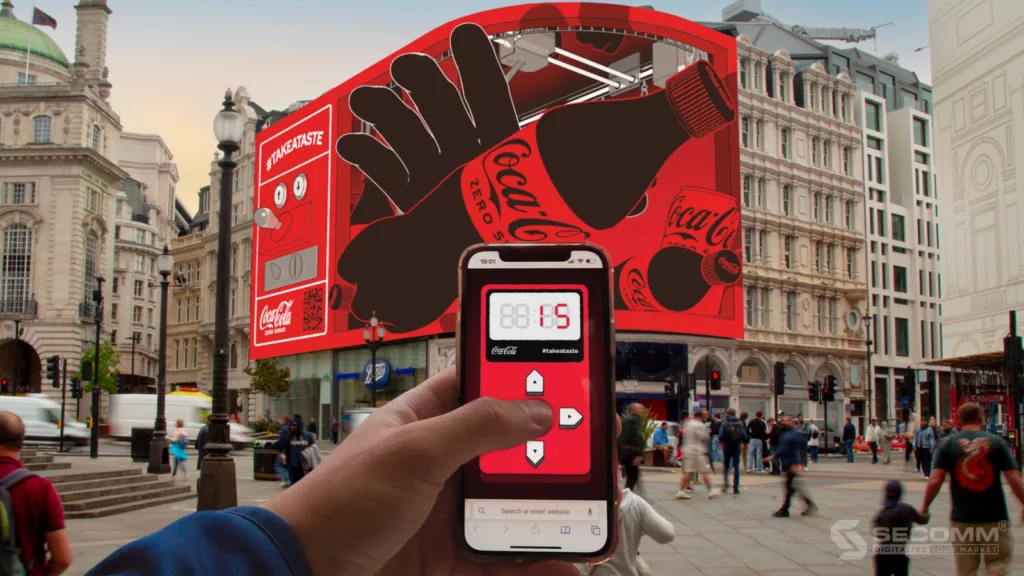It seems we can’t find what you’re looking for. Perhaps searching can help.
Sign Up for newsletter!
Subscribe to get the latest eBook!
Hotline







Augmented Reality (AR) – a term that has become familiar in today’s technology world. From entertainment applications to various industries, AR is integral to our daily lives. Moreover, it offers engaging and distinctive interactive experiences for eCommerce consumers. But what exactly is AR? How does it differ from VR, and what is its important role for eCommerce businesses? Let’s explore through the following article.
Augmented Reality (AR) is a technology brimming with potential, offering unique interactive experiences by merging real-world elements with computer-generated virtual elements. Simply put, AR allows users to “augment” the real world by adding information or virtual objects to it. This can occur via the screen of a mobile device, AR glasses or wearable devices.
One of the distinctive features of AR is its ability to create engaging interactive experiences for users without disconnecting them from the real world. Instead of separating users from their surroundings, AR serves as a bridge, seamlessly blending the virtual world and the real world together in a natural manner.
Continuously evolving, AR has progressed beyond being solely used in entertainment, opening up new possibilities in fields such as education, healthcare, advertising, and particularly eCommerce.
Although they can be easily confused, Augmented Reality (AR) and Virtual Reality (VR) are actually two distinct technologies with their use cases. While AR emphasizes “augmenting” the real world by adding virtual elements to it, VR brings users to an entirely new world, completely separate from the real world. When wearing VR headsets, users are fully immersed in a virtual environment, no longer seeing or interacting with the real world around them.
Simply put, AR combines the real and virtual worlds, whereas VR completely transitions users into a virtual realm. This difference is also reflected in how AR and VR are used in different contexts. While VR is often used in entertainment fields such as video games and films, AR can be integrated into practical applications like repair guides, online shopping, and much more.
In the eCommerce world, various types of AR are used to create engaging interactive experiences for customers. Here are the four most common types:
This type of AR uses markers or recognizable images to trigger and display virtual objects. Markers can be images, symbols, or QR codes. When the camera or AR device detects the marker, virtual objects appear on the screen, aligned with the position and orientation of the marker.
Unlike Marker-based AR, this type doesn’t require markers to determine the position and display virtual objects. Instead, it employs technologies such as image recognition, and GPS localization to determine the user’s position and direction, and then displays corresponding virtual objects on the screen.
This type of AR utilizes image projection devices to directly display virtual objects onto real surfaces. Instead of using a phone screen or AR glasses, AR objects are projected onto walls, screens, or other surfaces, creating the sensation that they exist in real space.
This type of AR creates an experience by “overlaying” virtual objects onto the real world, similar to overlaying virtual information onto real-world images from a camera. AR objects can be interactive images, text, or 3D objects displayed on the screen of mobile devices.
Augmented Reality (AR) is not only an entertainment technology but also a powerful tool that enhances the online shopping experience and brings clear benefits to eCommerce businesses. Here are four main advantages of implementing AR in eCommerce:
AR technology provides customers with a highly interactive and engaging shopping experience by allowing them to “try on” products in a real-world environment before making a purchase. With AR, customers can view products from various angles, change colors and sizes, and even test out product features or functionalities visually, enabling them to make quicker and more accurate purchasing decisions.
AR in eCommerce captivates customer attention by introducing novel and unique shopping experiences, encouraging them to interact more with the brand. Being able to interact with virtual products on mobile screens or AR glasses makes the shopping process more enjoyable, and the ability to share this experience on social media creates a positive ripple effect for the brand.
One major issue that eCommerce businesses face is the rate of product returns. AR technology can help minimize this rate by providing customers with an accurate and detailed view of products before purchase, thereby reducing the likelihood of products being returned due to incorrect size, color, or quality.
AR technology can be an effective marketing and advertising tool, enabling businesses to create powerful interactive content. Incorporating AR into marketing strategies not only helps increase brand awareness and attract new potential customers but also reinforces the loyalty of existing customers.
The use cases of AR in eCommerce are diverse and extensive. However, three primary methods stand out as the most common and favored by brands aiming to bolster customer interaction and increase sales.
One of the most popular applications of AR in eCommerce is creating a “virtual try-on” experience for customers. Instead of visiting stores to try on clothes, customers can use AR on their mobile devices to see how products look on-screen. Products that can utilize Virtual Try On include clothing, cosmetics, watches, eyeglasses, etc. Therefore, many brands worldwide have adopted this approach, such as Sephora, Bon Look, and Kylie Cosmetics.
Some brands use AR technology to help customers visualize products more visually and vividly. For example, IKEA allows customers to “place” furniture products in real space through the IKEA Place app and rotate, zoom in, and zoom out to view every detail. Instead of just allowing customers to look at static images, IKEA has provided a more engaging experience to encourage the decision-making process.
Some brands also leverage AR technology to create unique and impressive marketing campaigns. Coca-Cola launched an AR marketing campaign called #TakeATaste Now. This campaign allows customers to use mobile devices to scan QR codes on DOOH screens to change 3D images at will and receive a free bottle of Coca-Cola Zero Sugar. This has attracted curiosity and attention from the masses and successfully brought Coca-Cola Zero Sugar products closer to consumers.
Enjoy a free Coca-Cola Zero Sugar bottle with AR
Final Words
In summary, AR technology is not just a new trend but is also recognized as a powerful tool for optimizing eCommerce activities. With its superior flexibility, AR helps businesses build unique shopping experiences and create more engaging marketing campaigns to boost sales. You can find out more about B2B eCommerce trends here.
Ready to implement Augmented Reality (AR) in eCommerce? Contact SECOMM today!
 2
2
 2,455
2,455
 0
0
 1
1Subscribe to get the latest eBook!
Hotline